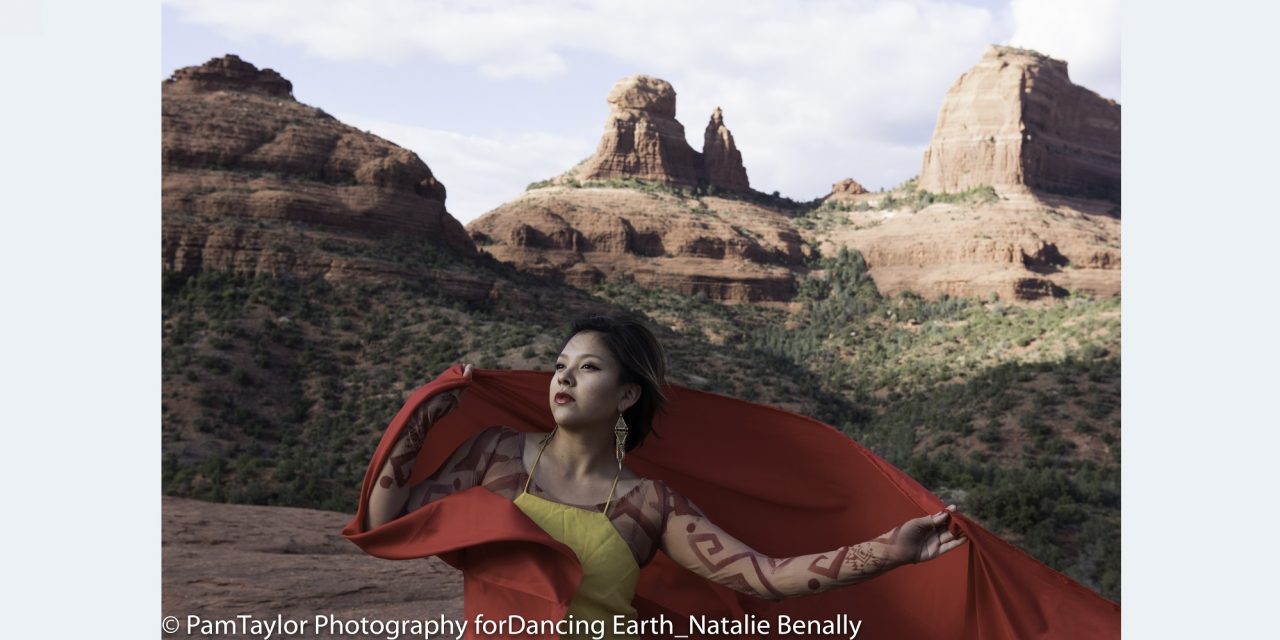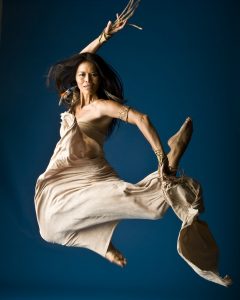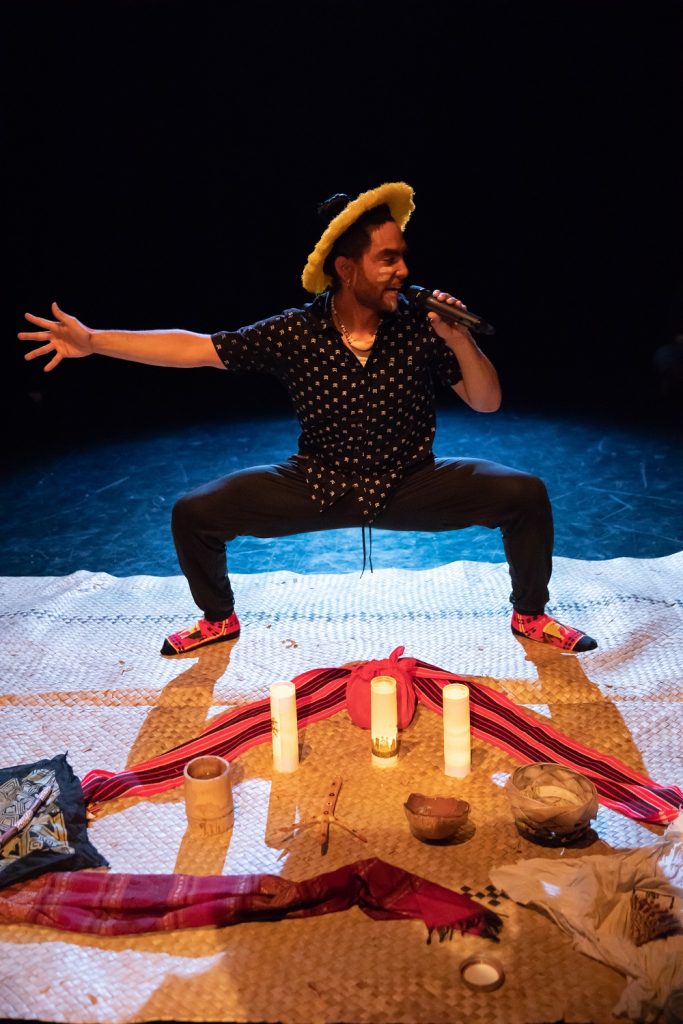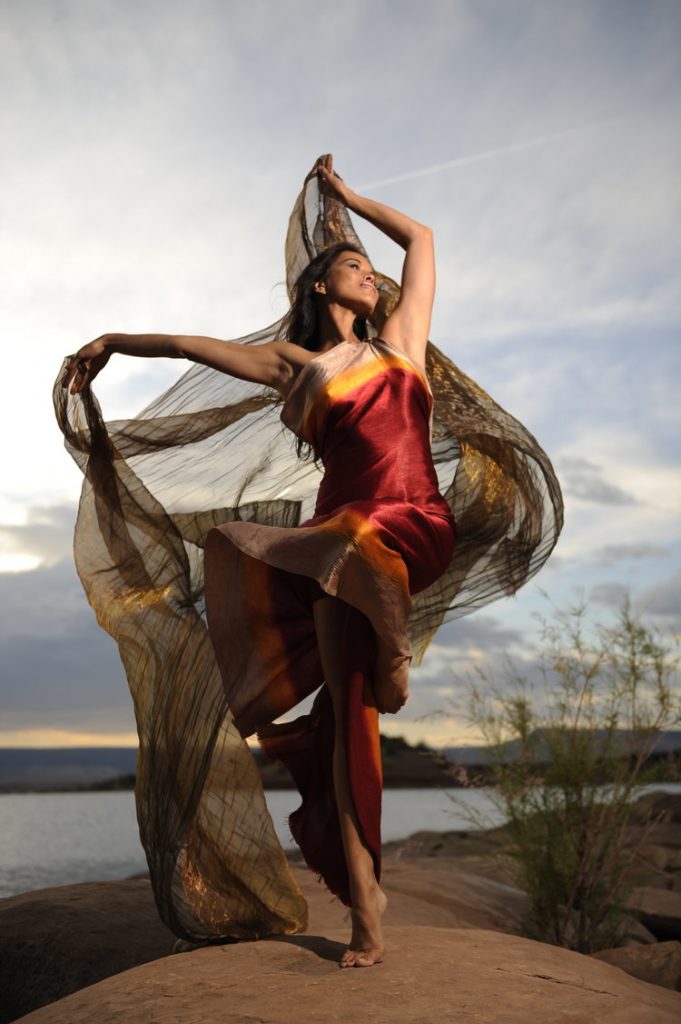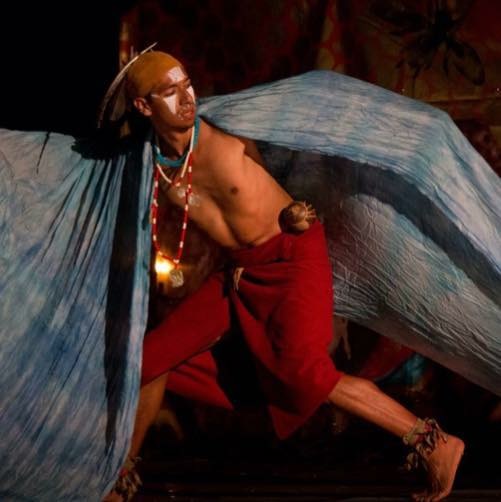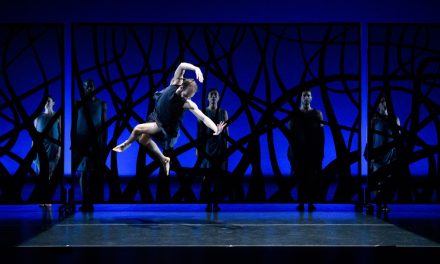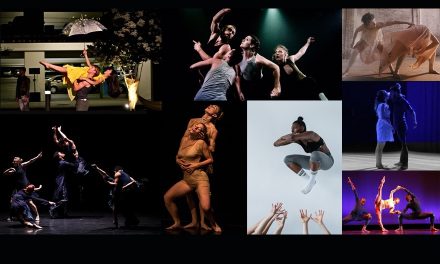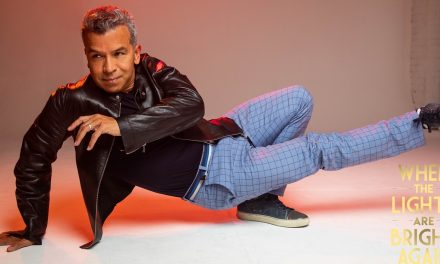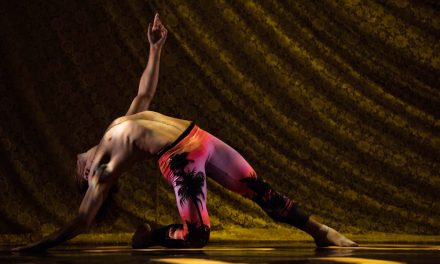On Saturday, May 11, 2019 Dancing Earth will participate in the Santa Monica’s second annual Indigenous Now event at the award winning Tongva Park. The festivities begin at 12 noon with opening ceremonies and continues through until 4 p.m. offering dance, music, spoken word and contemporary visual art by Indigenous artists based in Los Angeles, Santa Rosa and Santa Fe. This year’s theme is based on the Tongva word for “guest” and the organizers hope to open a dialogue “through a focus on the interdisciplinary nature of the relationship between Tongva hosts and their guests”. There is no admission fee to attend this event and all indigenous people and anyone interested in finding out more about California’s indigenous culture and art are welcome.
Dancing Earth will be represented with performances by Snowflake Towers (Yaqui/Tzeltal), Natalie Benally (Dine/Zuni/Ute) and Dakota Camacho (Matao/Chamoru). In addition, the day’s events will include singer-songwriter Kelly Caballero (Tongva) and hip-hop recording artist Jessa Calderon (Tongva). Billboard-sized photographs by artist Cara Romero (Chemehuevi) will be on view throughout the park, and legendary artist L. Frank (Tongva) will exhibit her new sculptural installation commissioned especially for Indigenous Now.
Rulan Tangen is the Founding Artistic Director and choreographer of Dancing Earth and I had an opportunity to discuss with her, the company’s involvement with the event called Indigenous Now. Tangen is of mixed heritage and someone who has a long caring and working relationship with indigenous communities. At the start of the interview, we briefly discussed her commitment to nurture young indigenous contemporary artists. I asked her to define a process term that I found on her website, “decolonizing the body”.
“I am seeking to find movement practices that are not necessarily connected to the mainstream esthetics.” Tangen said. She explained that decolonizing the body was a term that dancers and participants in her workshops have applied to the process after having experienced it through her applied exercises, practices and physical engagements.
“It has allowed them to access their ancestral knowledge or suppressed ways of knowing their body and believing in themselves.” She said. “With indigenous people, while outside forces have put them in boxes that caused them to feel that they are not enough.” Tangen stressed that this was not true of all indigenous people, but that even if they are deeply rooted in their culture, they are also coping with the rest of the world. She has been working and collaborating with culture carriers and dancers for over 20 years to translate diverse world views, themes, esthetics and value systems into training practices. Those participating in these workshops have stated that it has helped to “decolonize” by connecting to indigenous kinetic knowledge that was inside their bodies and allowing them to remain true to their indigenous self while performing other contemporary dance practices.
Most often when Dancing Earth is invited to perform, they first ask if there is an existing relationship with the host’s first nations. It is important to the company to have a respectful relationship with the host by asking permission to come onto the land. For Indigenous Now, that process was already in place and was handled respectfully.
Tangen explain that the company previously met and collaborated with one of the artists participating in this event, L. Frank. During that time, Frank shared several Tongva words and a company member, who is also a musician, composed a song incorporating these words. The song was then used to open one of their dances as it recognizes the Tongva language and deals with canoeing.
“It (the dance) gives the illusion of canoeing in and before landing, we introduce ourselves, our intentions and what offerings we are bringing to Tongva land. Tangen calls this a performed version of cultural prodigal.
Ms. Tangen selected three of her company members to perform at the Indigenous Now event. Each dancer as been developing works inspired by their own personal stories that then acted as the resource for their choreography. One dance is based on the choreographer’s grandmother, a sheep herder and weaver of rugs; and one is about corn, corn grinding and puberty ceremonies. The choreographer was raised Christian and therefore not allowed to participate in such ceremonies from her indigenous heritage. Another dance is Hip-Hop based and includes the choreographer’s vocals. And finally, one is by a dancer of Mayan heritage who comes from a long lineage of healers.
Ms. Tangen has a deep respect, love and involvement with indigenous people throughout California and beyond. Another person who has a huge part in Dancing Earth’s work is its Program Manager, Tiśina Ta-till-ium Parker. She is the granddaughter of a great basket weaver, and her background includes Southern Sierra Miwuk of Yosemite, Mono Lake Kucadikadi Paiute and Kashia Pomo tribes. Parker also acts as a part-time Costume Designer for the company.
“So, whenever there is a chance to acknowledge, uplift, support and, in many cases, involve – because I have hired quite a number of native California collaborators and dancers – I get involved with indigenous artists.” Tangen said. In the case of Indigenous Now, it was because the theme was based on the word “guest” that made her want to become involved. “I wanted to embody and share with the Santa Monica community and audience members a beautiful and graceful way to show cultural prodigals and to show the actual relationship building through the performance.” Ms. Tangen said.
The company will be performing between two billboard-sized photographs by Cara Romero, who Ms. Tangen describes as a friend, a colleague and an incredible California native photographic artist. “I am very excited for the dance to be able to animate these incredible images.” She said.
The event is to focus on the Tongva people, who officials say are the traditional land caretakers of Tovaangar, which was composed of the Los Angeles basin and the Southern Channel Islands. The Tongva people have been indigenous to the Los Angeles Basin for approximately 7,000 years, and their history has been well documented through thousands of archaeological sites, in State historical records, federal archives, and records found in the archives of San Gabriel and San Fernando Missions. While researching the Tongva people I read that the “18 lost treaties” of the US recognized the Tongva but that they were never adopted. The United States, from the mid-1940s to the mid-1960s, had a policy of “Assimilation” of Native American Tribes, where the Gabrielino-Tongva tribes were effectively terminated. They were enslaved and forced to build the two aforementioned missions.
The Tongva Park covers 6 acres of land that is divided into 4 main sections: Observation Hill, Discovery Hill, Garden Hill, and Gathering Hill. Among the multitude of awards presented to the designers of Tongva Park are the American Institute of Architects – Los Angeles Design Award, 2014 and the American Planning Association – National Planning Achievement Award, 2015
When: Saturday, May 11, 2019 – 12 p.m. – 4 p.m.
Where: Tongva Park, 1615 Ocean Avenue, Santa Monica, CA. 90491
Tickets: Free and open to all Indigenous peoples and anyone who wishes to learn how to be a good guest.
Parking: Parking is available at the Civic Center Parking Structure, 333 Civic Center Dr. First 30 minutes free. $1 per each additional hour. $5 maximum per day.
For more information about Dancing Earth, click here.
Featured image: Natalie Benally of Dancing Earth – Photo by Pam Taylor

